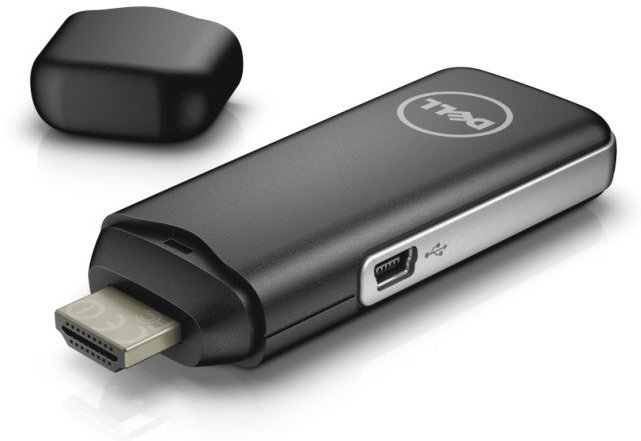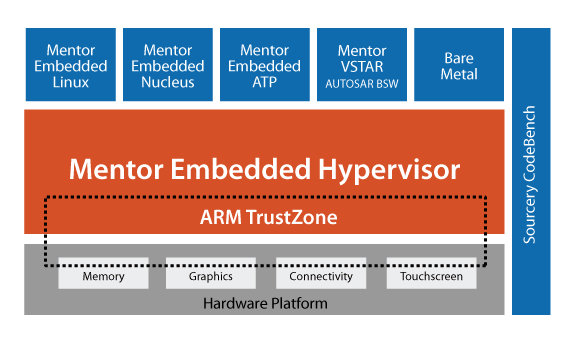Linaro Connect Asia 2014 has just started in Macau today and will take place until Friday. You can follow the sessions live and/or their recordings via Linaro OnAir YouTube Channel. I’ve watched the opening keynote, and embedded the video at the bottom of this post. The keynote focuses on ARMv8 for Linux and Android on servers, mobile devices, digital home, and more, and involves two main speakers: George Grey, Linaro CEO , and Jon Masters, Chief ARM Architecture at Red Hat. The speaker beginning of the video provides some practical information and the schedule for Linaro Connect. The keynote itself really starts around 15:50 with George Grey who spends the first 10 minutes introducing the latest Linaro members: Qualcomm, Mediatek, ZTE, AllWinner and Comcast. He then talks about the new Mobile sub-committee (MOBSCOM) that will focus on big.LITTLE, Android optimization and Android on ARMv8, as well as the soon-to-be-announced Linaro […]
Dell Wyse Cloud Connect Android mini PC is Now Available for $129
Dell unveiled Project Ophelia about a year ago, and has now officially launched the product under the name Wyse Cloud Connect for $129. The device runs Android, but is mostly different from all the Chinese HDMI sticks thanks to its enterprise-oriented firmware that supports Wyse Cloud Client Manager software-as-a-service (SaaS), PocketCloud software, as well as Citrix Receiver, VMware Horizon View client, and Microsoft RDP protocol for remote desktops. Wyse Cloud Connect specifications: SoC – Multi-core ARM CortexA9 System-on-Chip (SoC). Last year’s prototype was said to use Rockchip RK3066, but it may have changed since then. System Memory – 1GB RAM Storage – 8GB NAND Flash + micro SD card slot (up to 64 GB) Video Output – HDMI with MHL, DisplayPort Connectivity – Dual band Wi-Fi 802.11 a/b/g/n, Bluetooth 3.0 USB – 1x USB mini for peripherals (keyboard/mouse), 1x Micro USB host port / external power input Power – Micro […]
Top 10 Posts of 2013 and Stats on CNXSoft Blog
This is the last day of the year, and just like in 2012, I’ll look back on the main trends of this year, post a list of the top 10 posts of 2013 on cnx-software.com, and add some fun stats about the site and my visitors. 2013 has been the year of quad core media players and mini PCs, especially those based on Rockchip RK3188, XBMC is now featured in many Android STBs, “big.LITTLE” and “Octa-core” have been the buzz words on the application processor front, Google has entered the HDMI TV sticks market with the ChromeCast, and is competing with Miracast / DLNA TV dongles, we’ve gotten more and more low cost Linux development boards, crowdfunding has almost gone mainstream, and the Internet of things has started to take off thanks to new technologies such as Bluetooth Low Energy. I’ve compiled the list using data from Google Analytics, filtered […]
Mentor Embedded ARM Hypervisor Automotive Demo on Freescale i.MX6 Board
Virtual machines are usually run on server or desktop PC to run several operating systems simultaneous. About 2 years ago, I wrote about an embedded hypervisor running Linux and Android on the Pandaboard develompent board, with the goal of separating home and enterprise operating systems in mobile devices so that enterprise data is safe. Since then, virtualization extensions are now part of ARM Cortex A15 / A7, and as well as the new Cortex A53 / A57 ARMv8 64-bit cores, but in my mind at least, those where mostly designed to address the server market. It turns out hypervisors are also useful in the automotive field, where for example, the dashboard and In-vehicle infotainment (IVI) systems runs in two separate virtual machines controlling two different displays from one processor. Mentor Embedded showcased such automotive system at ARM Techcon 2013, where they showed a Freescale i.MX6 quad core board, which looks […]
Fedora 20 “Heisenbug” Release Makes ARM a Primary Architecture
Fedora has been supporting ARM architecture for a while now, but it was only as a secondary architecture without official support. With the recent Fedora 20 release, nicknamed “Heisenbug”, the ARM architecture, more exactly ARMv7 hard float and greater, is promoted to a primary architecture meaning ARMv7 will have the same status as x86 and x86_64 architectures with packages officially build and supported by the Fedora community. What it does not mean however, due to the nature of ARM architecture, is that you can simply download an ISO to install on any ARM platforms, like you would do on an Intel or AMD computer. It’s a little more complicated than that, as it is platform specific, but instructions are available for the Beaglebone Black, Compulab Trimslice, the Wandboard, Calxeda Energycore Midway and Highbank, and Versatile Express in QEMU. You can download images with MATE, KDE, XFCE, LXDE, SOAS desktops, as […]
Linaro 13.08 Release With Linux Kernel 3.11 and Android 4.3
Linaro 13.08 has been released with Linux Kernel 3.11-rc6 (stating), Kernel 3.10.9 (LSK – beta), and Android 4.3. This month is the first release based on Android 4.3, which was only pushed to AOSP at the end of last month. I can also see work on new SoCs/hardware this month with Texas Instruments Keystone II ARM Cortex A15+DSP SoC and Fujitsu AA9 board (Which processor?, I could not find out). A lot of work also appears to have gone in OpenEmbedded, further optimizations have gone into NEON optimized AES encryption in OpenSSL, and more. It’s also the first time I can see a Ubuntu Raring engineering build image for HighBank (Calxeda Energycore). Here are the highlights of this release: Android Engineering Android stack was tuned to achieve 100% CTS pass result on Android 4.3 Analyzing the UEFI EDK II boot loader for Android completed, implementation of fastboot application and USB […]
Linux Kernel 3.10 Released
Linus Torvalds has announced the release of Linux Kernel 3.10: So I delayed this by a day, considering whether to do another -rc, but decided that there wasn’t enough upside. Sure, it hasn’t been as quiet as I’d like, and we had this long discussion about an inode list locking scalability issue over the last week or two, but in the end that issue turned out to not be new, and while we may end up back-porting the eventual resolution to 3.10, it wasn’t a reason to delay the release. Similarly, while I might wish for fewer pull requests during the late rc’s (and particularly the ones that came in Friday evening -inconvenient for a weekend release), at some point delaying things doesn’t really help things, and just makes the pent up demand for the next merge window worse. In other words, I could really have gone either way, but […]
Linaro 13.05 Release With Linux Kernel 3.10, Android 4.2.2, and Ubuntu Raring Ringtail
Linaro 13.05 has just been released with Linux Kernel 3.10-rc2 and Android 4.2.2. This is the first release with Ubuntu 13.04 (Raring Ringtail) images. There’s also Linux Linaro Stable (LSK) preview based on kernel 3.9.4. BeagleBone Black support has been added and preliminary hwpack and images are available, an Android Arndale image with virtual framebuffer is also available. You can now get a desktop environment (XFCE) on Aarch64 / ARMv8. Hardware packs with Real-time Linux kernel (PREEMPT_RT) can be downloaded for Pandaboard and Arndale. More work has gone into Aarch64, big.LITTLE HMP, and ARM virtualization (KVM). Finally an UEFI is available not only for Vexpress boards, but also Samsung Origen and Arndale boards, as well as Texas Instruments Pandabord and Beagleboard. Here are the highlights of this release: LAVA First prototype production run of LAVA Lmp completed, tested functional. Beaglebone Black is now running in LAVA. TC2s is now running […]








